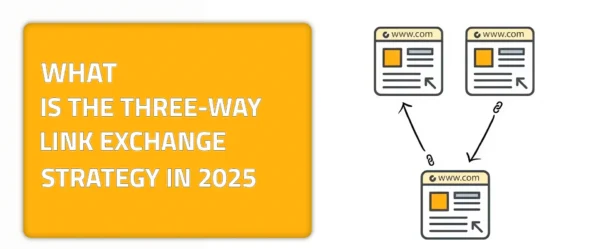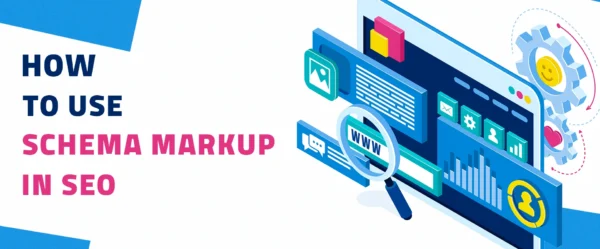Mastering the Art of Do Follow and No Follow Link Building
In the vast realm of SEO and links lie website owners. Well, they just lie there, as this realm can be overwhelming. The amount of information and data that website owners deal with is remarkable, with multiple strategies they need to apply, many types of links they need to build, and search engine penalties they need to fix. Speaking of links, did you know that there are many types of links that we see attached to any article or webpage? However, the two most important types of links are no-follow and do-follow. But what exactly are they? This article will answer all the questions you might have. In this article, we will conduct a full comparison of do follow vs. no follow links. We will dive deep into each and learn the real difference between them.
What are Follow Links?
The first type we are going to discuss in the do follow vs no follow comparison is the follow or do-follow link. Simply put, do-follow links are the standard type of links that we encounter on all websites, and clicking on them redirects us to a whole other website relevant to what we saw or engaged with. Some people even contradicted labeling these links, because what is the point of giving “just links” a name? Some even find it illogical to not just call do-follow links backlinks that some can build using platforms like LinkExchange.AI.
However, that would be just one side of the story. Do-follow links aren’t just links that you include that refer to another website or links that others include that refer to your website. They are hyperlinks that give these links attributes and mark them as crawlable by search engine crawlers. So, by marking a link as a do-follow, you give the green light to a web crawler to follow it. Sometimes, website owners don’t need to mark these links as the standard option.
Importance of Follow or “DoFollow” Links
Follow or “DoFollow” links play a significant role in the realm of search engine optimization (SEO) and website authority. Here are a few key reasons why these links are important:
SEO Boost
Links are one of the main ways search engines evaluate the quality and relevance of a website. Search engines place more trust in your site when other authoritative websites connect to your material by following the links. Because of this, your material may rise in the search engine results, which is good for your SEO.
Traffic Generation
Another way to get people to visit your site is to follow links that other popular websites have. Your website’s traffic and engagement rates could skyrocket if people who see these connections on other sites visit your site and read your material.
Domain Authority Building
Domain authority is enhanced when your website gathers do follow links from reputable sources. If your pages have a lot of high-quality links connecting to them, search engines will be more inclined to trust and rank your material higher. In the long run, this can boost your credibility and exposure in your specific field.
Enhanced Credibility and Trust
Do follow links are like endorsements or testimonials from other sites. The value and trustworthiness of your content are confirmed when authoritative sources connect to it. When credible experts in your industry cite your work, visitors are far more inclined to take it seriously.
Indexing and Crawling Benefits
To help search engine crawlers find and index your material, follow links are a great asset. Search engine bots can better traverse and grasp your website’s structure when they meet these links and follow them. This has the potential to increase the exposure of newly published content in search results and speed up the indexing process.
What are No Follow Links?
On the other hand, in the do follow vs no follow comparison, there are no follow links. No follow links are the complete opposite of anything we have mentioned in do follow links. No follow links are attributes that website owners give to certain links to mark them as negligible for web crawlers. Website owners usually do this when they link to a website that they don’t like its content or prefer as a destination. Unlike do-follow links, no-follow links are not a standard option for referred links. Marking a link as a no-follow would require you to make modifications to the website’s HTML code.
The Journey of No Follow Links From Beneficial to Harmful
No follow links have this reputation of being part of manipulative strategies and that they are harmful to SEO. Did you know that no-follow links had a very beneficial purpose at the time they were first launched? The no-follow attribute first appeared in 2005. Google released the no-follow attribute as a way to prevent manipulation and black-hat strategies. The no-follow attribute was used to allow the website to refer to a website without affecting a website’s ranking. So, even if you referred to a spammy website, this wouldn’t affect you or get you penalized.
However, the purpose for which Google intended to launch the no-follow attribute changed sometime after. People started to get tricky with no follow links and came up with black-hat strategies that depended on this attribute.
Google tried so hard to fight and eliminate such manipulative strategies in many ways and methods. And in 2019, Google announced that no follow attributes would be allowed if they were relevant; other than that, they would be penalized.
Despite being an unfavorable attribute, Google still looks at it as a positive hint and a page rank factor.
The Importance of No Follow Links
Preserving Website Credibility
The integrity and reliability of a website are greatly enhanced by no follow links. When one page connects to another, it is effectively endorsing the reliability of that other page. An effective use of no-follow links allows website owners to selectively support links while protecting their site from possible spam or untrustworthy content. The credibility and trustworthiness of your internet presence can be enhanced in this way.
Regulating PageRank Flow
The number of backlinks has an impact on web page rankings. A no-follow link prevents search engines from giving one site more page rank than another. Search engines still recognize these links, even though they won’t use them to rank. Website owners can restrict the flow of link equity inside their site by deliberately using no-follow links. This prevents external connections, which may be poor, from degrading precious PageRank.
Avoiding Penalties and Spam
Google and other search engines are always improving their algorithms to prevent manipulation and spam. One way to stay out of trouble with fines for misleading link schemes is to use no-follow links correctly. A website could face penalties from search engines if its linking practices are found to be excessive or unnatural. Showing a commitment to ethical linking practices by using no-follow links in situations like advertising might prevent penalties.
Do Follow Links vs No Follow Links: Key Distinctions
Now to the most exciting part of the artwork, which is the key distinction of the do follow vs no follow links comparisons. So, let us explore a few!
Influence on Ranking
The first key distinction is the influence on ranking. Do follow links can win this round, as they have a significant influence on ranking if executed properly. The more a website attracts do follow links, the more a search engine will consider it a trustworthy source of information. Therefore, both SEO and ranking would increase. On the other hand, no follow links do not influence ranking, as they are used to give search engine crawlers the hint to pass and go over a certain link.
Purpose
The purpose of both attributes is completely different. So, for instance, the do-follow links’ main purpose is to elevate rankings on all SERPs and establish connections with other websites in the same industry. It also aims to give a website credibility among users and other websites. As per the no follow links’ main purpose, they are used for linking to but not endorsing a website. So, for instance, in the case of including sponsored content and you don’t trust this content enough, you link to it but don’t put much value on it through the no follow attribute.
Crawlability
Crawlability is the last important difference; it’s the bridge that separates do follow links from no-follow links. Do follow links gives the ultimate green light for the web crawler to follow the tagged link and go through the crawling process that includes analyzing the content and indexing. On the other hand, the no-follow attribute prohibits any crawling, analysis, or indexing from happening.










